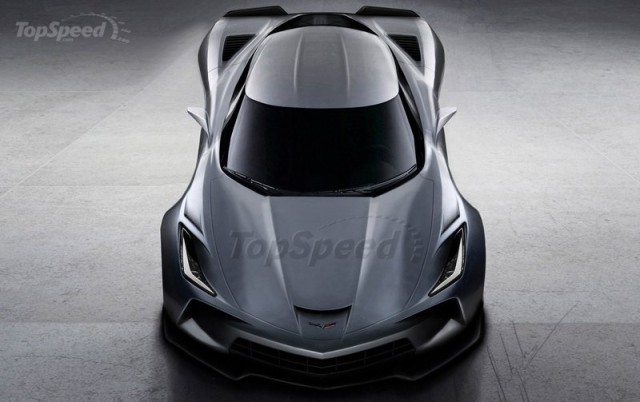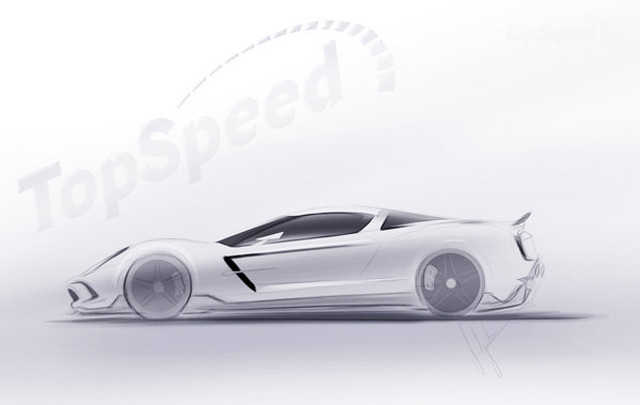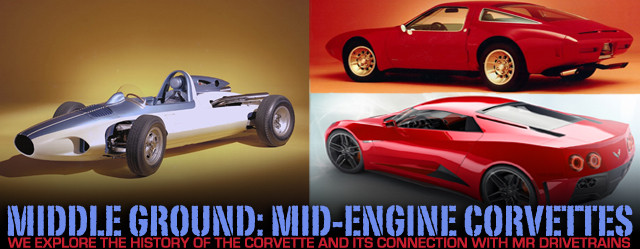 Many vehicles have come and gone from the Chevrolet lineup over the past 60-plus years, but the Corvette is not one of them. As the Bowtie’s premier showpiece and perennial halo model, the car was always given a bit more leeway and extra attention than more profitable nameplates, drawing its advances and innovations from some of GM’s best and brightest: Larry Shinoda, Bill Mitchell, Zora Arkus-Duntov, and Harley Earl, just to name a few.
Many vehicles have come and gone from the Chevrolet lineup over the past 60-plus years, but the Corvette is not one of them. As the Bowtie’s premier showpiece and perennial halo model, the car was always given a bit more leeway and extra attention than more profitable nameplates, drawing its advances and innovations from some of GM’s best and brightest: Larry Shinoda, Bill Mitchell, Zora Arkus-Duntov, and Harley Earl, just to name a few.
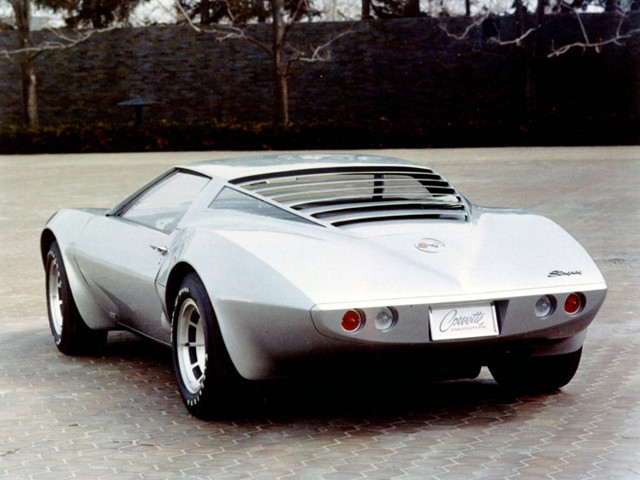 Over the course of six decades, the Corvette’s focus was refined from a simple yet enjoyable sports car to a sleek yet affordable sports car, selling like hotcakes here in the States while lapping hard and fast in the international racing scene. Engineers sought to improve the Corvette’s characteristic year after year, and many an experiment was tried in the name of refinement and perfection.
Over the course of six decades, the Corvette’s focus was refined from a simple yet enjoyable sports car to a sleek yet affordable sports car, selling like hotcakes here in the States while lapping hard and fast in the international racing scene. Engineers sought to improve the Corvette’s characteristic year after year, and many an experiment was tried in the name of refinement and perfection.
Yet one question continues to pop up every now and again when it comes to the Corvette’s design–why does the car always conform to a front-engine, rear-wheel-drive drivetrain layout? The Corvette is nothing if not a bold machine, and thus warrants the occasional foray into uncharted territory, which can (and did) yield some incredible results in the form of mid-engine, rear-wheel-drive supercars.
In this article, we’ll be taking a closer look at some of these examples of GM’s MR designs of years past, as well as addressing the latest lightning rod of speculation to arrive on the scene–the C8 “ZORA ZR1,” widely speculated to arrive in 2017. Get ready for a walk down memory lane.
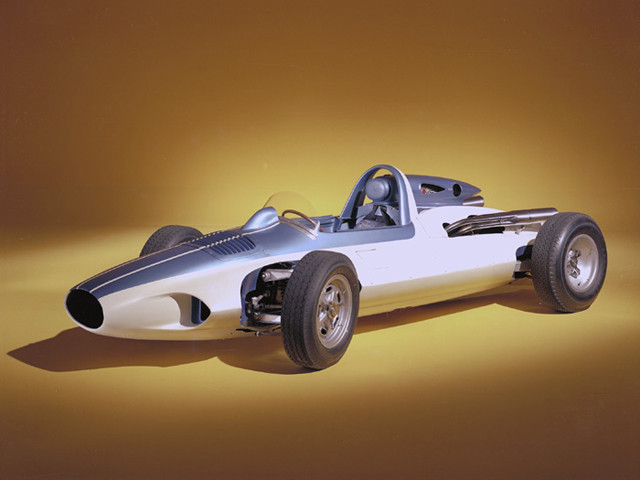
Photo credit: GM Heritage Center
In The Beginning: The CERV I (1959-60)
It goes without saying that Zora Arkus-Duntov, Father of the Corvette, was one of the most intelligent and gifted engineers of all time. After all, it was his input and reasoning that gave the nameplate its close association with V8s, disc brakes, and fiberglass construction.
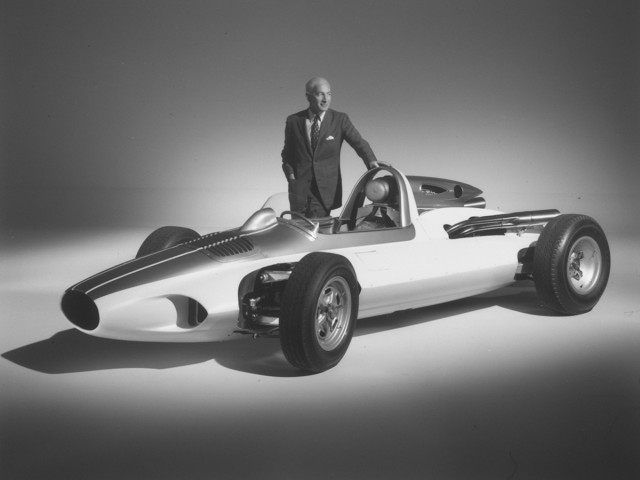
Zora Arkus-Duntov, “Father of the Corvette,” stands with the CERV I in a promotional still. Photo credit: Jalopnik
In the late 1950s, Arkus-Duntov was at the top of his game, having overseen the success of the XP-87 and its groundwork for the forthcoming C2 Sting Ray. It was in 1959 that the man began working on the Chevrolet Engineering Research Vehicle I, or CERV I, which had the goals of researching and developing body, chassis, and suspension systems for future models.
It packed a 283 ci V8 just ahead of the rear axle, generating 350 hp and weighing 350 pounds, saving weight through magnesium and aluminum parts. The body was made out of fiberglass and totaled just 80 pounds in all, while the chassis was 125 pounds of chrome-molybdenum tubing.
At its final stage, the CERV weighed only 1,600 pounds. It featured four-wheel independent suspension and cast magnesium alloy wheels, as well as front disc brakes and rear drum brakes. Twin 10-gallon rubber bladders acted as fuel cells for the car. Later on, Arkus-Duntove retrofitted the CERV with a 377 ci aluminum small block V8, a Rochester fuel injection system, a streamlined body (courtesy of Mr. Shinoda), and Indy-style tires and wheels. In this state, the car was able to achieve a top speed of 206 mph.
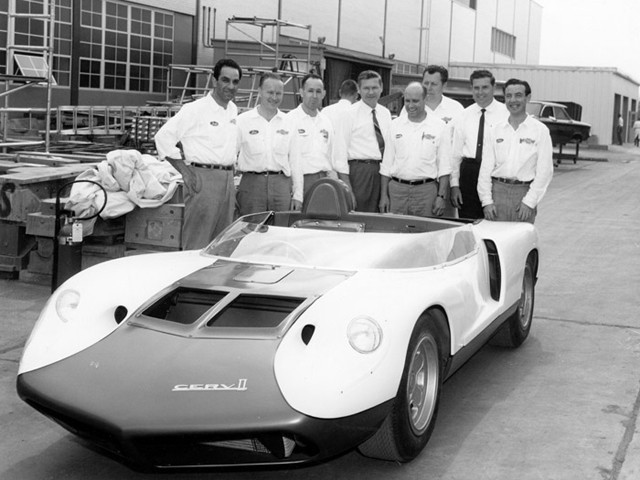
Photo credit: GM Heritage Center
Picking Up Speed: The CERV II (1962-64)
To follow up on the amazing wonder that was the CERV I, Arkus-Duntov once again headed up the development of its successor, the CERV II, in 1962. News of Ford’s plans to defeat Ferrari at Le Mans with the GT40 was circulating, and GM wasn’t about to bow out and let the Blue Oval take all the glory.
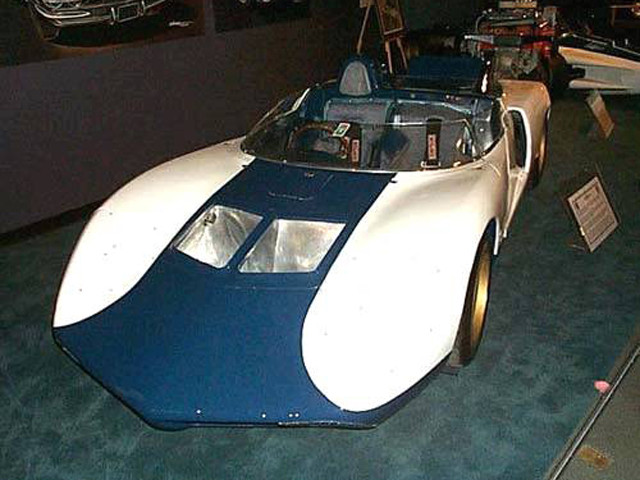
The CERV II was lightweight and powerful, weighing under a ton and putting out close to 500 hp. Photo credit: corvettes.nl
Duntov’s vision imagined having two Corvettes in the Chevrolet lineup: one for street use, and one for racing use. The higher-ups thought little of it, but didn’t stop the Belgian-American engineer from giving the program his best shot. He wound up following in the footsteps of Ford somewhat, utilizing a monocoque body over a steel frame.
The motor was a 377 ci V8, packing a 10.8:1 compression ratio and Hilborn fuel injection, and capable of 490 hp. Chevrolet’s general manager at the time, the renowned “Bunkie” Knudsen, called for the car to use a larger four-liter V8 with titanium hubs, valves, connecting rods, and exhaust manifolds. It was planned to weigh under 1,400 pounds and race in the international prototype class.
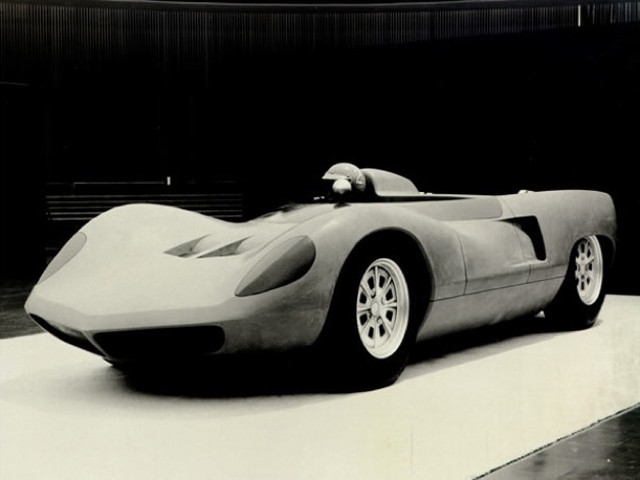
Chevrolet general manager “Bunkie” Knudsen sought to use the CERV II for racing, but was shut down almost immediately by his higher-ups. Photo credit: corvettes.nl
Knudsen’s superiors, upon hearing this, forbade the man from influencing the program, and rejected any idea of using the CERV II to challenge the GT40. But they didn’t close the door just yet. Instead, development continued as the drivetrain evolved to include all-wheel-drive with dual torque converters. This allowed the vehicle to have variable power delivery, which fluctuated in accordance with vehicle speed.
Wide wheels accommodated prototype low-profile Firestone tires, with outboard disc brakes on all fours. In 1964, the CERV II underwent driven testing in the hands of legends like Jim Hall, Roger Penske, and Bob Clift, and was reported to achieve 0-60 mph in 2.5 seconds, with a top speed of over 180 mph.
Though the CERV II never went toe-to-toe in the racing circuit, it did continue to serve a purpose as a testbed for a “super Corvette” (which wound up being canned as well). This was, however, not the last word in mid-engine design to ever come out of General Motors.
Heat In The Kitchen: The XP-880 And XP-882 (Late 1960s)
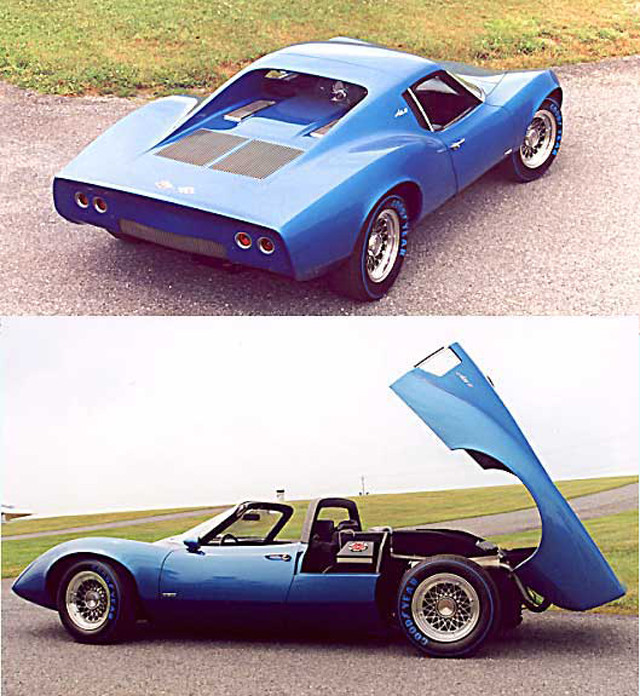 Friendly competition between Arkus-Duntov and the like-minded racing enthusiast engineer Frank Winchell birthed two separate MR concepts: Arkus-Duntov’s XP-882, and Winchell’s Astro II XP-880. The former was a response to Winchell’s early lead in the contest, which packed an interesting drivetrain combination–more on that later.
Friendly competition between Arkus-Duntov and the like-minded racing enthusiast engineer Frank Winchell birthed two separate MR concepts: Arkus-Duntov’s XP-882, and Winchell’s Astro II XP-880. The former was a response to Winchell’s early lead in the contest, which packed an interesting drivetrain combination–more on that later.
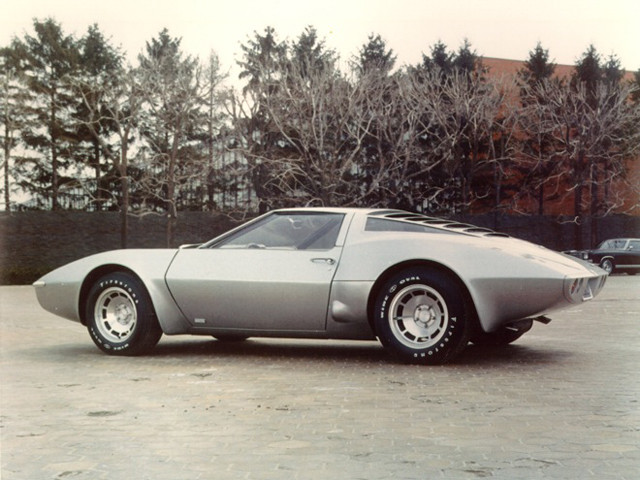
The XP-882 fixed the transmission issue of its predecessor by using a Toronado transaxle instead of a Tempest one. Photo credit: corvettes.nl
Suffice it to say, the XP-882 was a vast improvement over Winchell’s XP-880 Astro II (pictured above), which similarly used a big-block V8, but had troubles in performance due to the weak transaxle sourced from the Pontiac Tempest. The XP-880 took 11 months to create from start to finish, and when it debuted at the New York International Auto Show in 1968, the media went crazy with speculation on what it meant for the future of the Corvette.
The XP-880 had all the right stuff to titillate the public: a rear opening hatch, low-slung body, smooth curves that resembled the C3, a 427 ci V8, and a curb weight of 3,300 pounds. Testing showed it could grip up to 1.0 Gs in corners, too. But that underwhelming two-speed Tempest transaxle was a major disappointment, and Chevrolet imagined that disappointment would be shared with the public at large as well; hence, the XP-880 never entered production.
Determined to succeed where Winchell had failed, in 1969, Arkus-Duntov opted for a flipped-around drivetrain that consisted of a 454 ci V8 mated to an Oldsmobile Toronado (which was front-wheel-drive) transmission, specifically the TH-425 three-speed. Though stouter and more durable, it could not be overlooked that the BBC-Toronado combination weighed 950 pounds, significantly increasing the car’s weight.
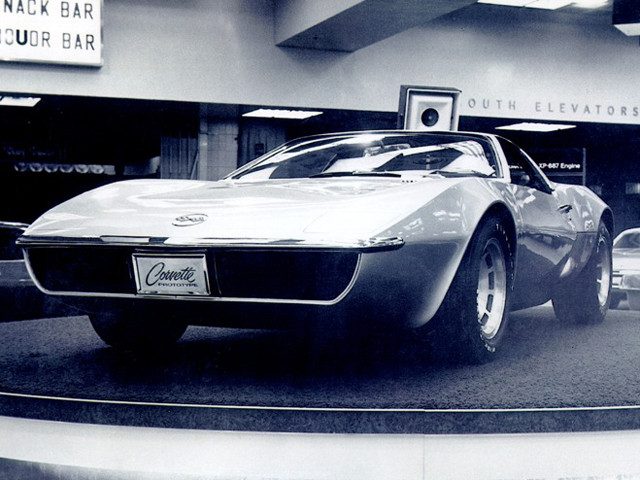
As capable and agile as it may have been, Chevrolet feared the MSRP would have scared away fans of the Corvette. Photo credit: corvettes.nl
So it was back to the drawing board once again for the engineers. The public got little more than appearances at car shows and magazine covers to gawk over, and that was it for the 1960s. So what lay in store for the 1970s?
You Spin Me Right Round: Rotary Engines Enter The Mix (1972-73)
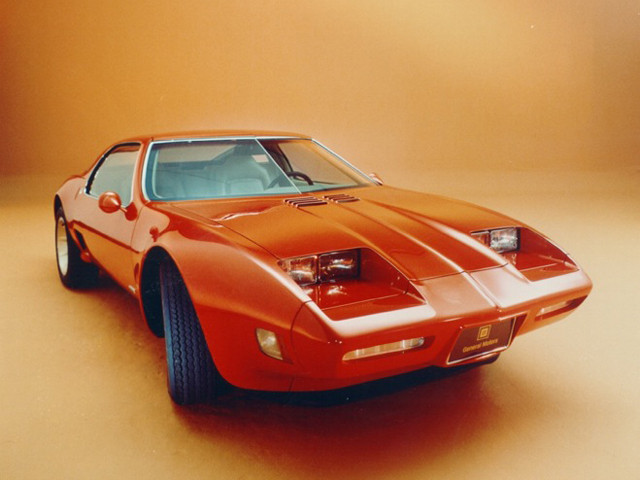 Arkus-Duntov exited the picture for the next phase of mid-engined Corvettes, which began in 1972 with the XP-897 GT. It was here that strong consideration went toward abandoning standard piston-based engines in favor of Wankel rotary engines.
Arkus-Duntov exited the picture for the next phase of mid-engined Corvettes, which began in 1972 with the XP-897 GT. It was here that strong consideration went toward abandoning standard piston-based engines in favor of Wankel rotary engines.
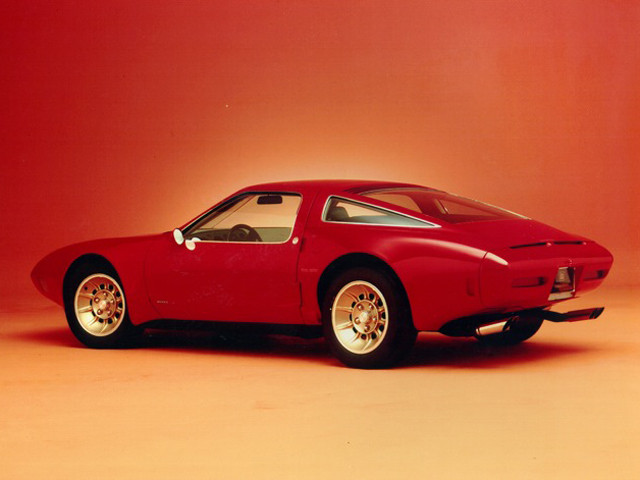
The XP-897 had some terrific upgrades over the standard Corvette, but its design was too radical for Chevy’s taste. Photo credit: corvettes.nl
Advantages for rotary engines included higher power-to-weight ratios, no reciprocating parts, little to no vibration, and cheaper production costs, just to name a few. The XP-897 GT, for its part, used a 266 ci two-rotor design that put out 180 horsepower, set inside a modified, Pininfarina-built Porsche 914 chassis with a steel body.
This was followed a year later with the refashioned XP-882 AeroVette, using twin two-rotor rotary motors bolted together and tuned to make 420 horsepower–a “Super Wankel,” if you will. Bill Mitchell, who was in charge of the redesign, kept the original body intact, adding bifold gull-wing doors and plastic nose and tail sections.
Look familiar? The AeroVette was actually the XP-882 retrofitted with two rotary engines and bifold doors. Photo credit: corvettes.nl
In the end, Chevrolet gave each concept the once-over and deemed them both to be ideological dead ends, seeing them as too radical to earn the Corvette nameplate. Surely, the Corvette engineers had learned by now to stop touching the hot stove of mid-engine scorn–or had they?
Try, Try Again: The Corvette Indy Concept and CERV III (1985-1990)
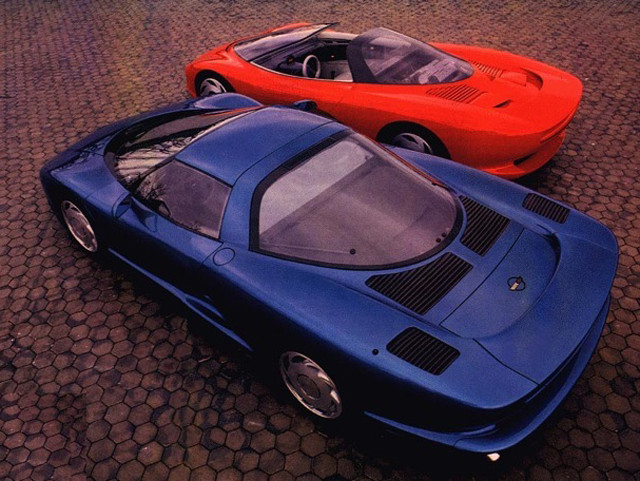 Proving he could not be silenced, Arkus-Duntov re-entered the scene in 1985 with the Corvette Indy Concept (pictured above). Situated between the axles was a twin-turbocharged, 32-valve 2.6-liter V8, courtesy of the MR experts at Lotus Engineering. The official power numbers of the engine were never released to the public, but it’s believed to be about 600 hp.
Proving he could not be silenced, Arkus-Duntov re-entered the scene in 1985 with the Corvette Indy Concept (pictured above). Situated between the axles was a twin-turbocharged, 32-valve 2.6-liter V8, courtesy of the MR experts at Lotus Engineering. The official power numbers of the engine were never released to the public, but it’s believed to be about 600 hp.
Besides the screaming eight-cylinder mill, the concept also featured such advances as all-wheel-drive, all-wheel steering, active suspension, and a rear-facing camera that fed video to a monitor installed inside the dash. There was also ABS, electronic traction control, and electronic throttle control.
Three of these concepts were made: one in silver, one in red, and one in blue. All of them made the rounds at the major car shows in 1986, and once again fueled the fire of Chevrolet’s so-close-we-can-taste-it MR Corvette.
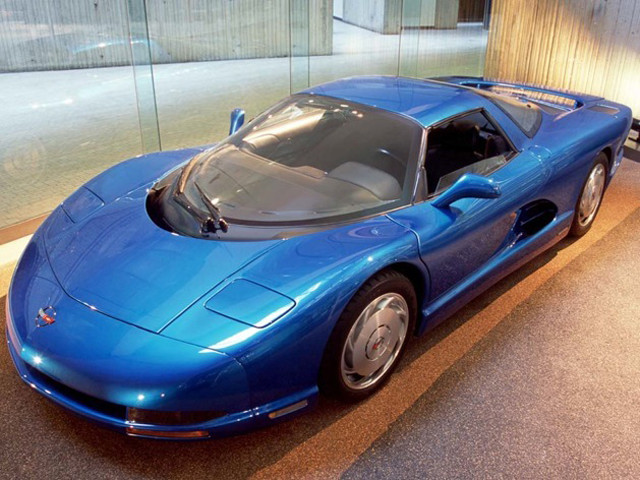
The legendary CERV III. 650 horsepower, 225 mph top speed, and millions of dollars in production costs, all in one. Photo credit: corvettes.nl
This notion was once again bolstered in 1990 with the debut of the CERV III. It was a repurposed Indy Concept, fitted with a twin-turbo, 32-valve 5.7-liter V8 believed to make 650 hp and 655 lb-ft of torque. Not to mention, the car also boasted a scary-fast top speed of 225 mph.
The carbon fiber/kevlar/nomex body (with aluminum honeycomb reinforcement and a fiberglass-like finish), a novelty in the car world, gave the CERV III a drag coefficent of .277. It stood as an icon of its kind and a testament to what GM was capable of.
Such a leap in technology and ability was not without its costs, however; for example, the body alone cost between $300,000-400,000 to produce, and that was in 1995 dollars. Then there was the fact that the car used two transmissions, dual disc brakes on all four wheels, and various electronic devices in control of everything.
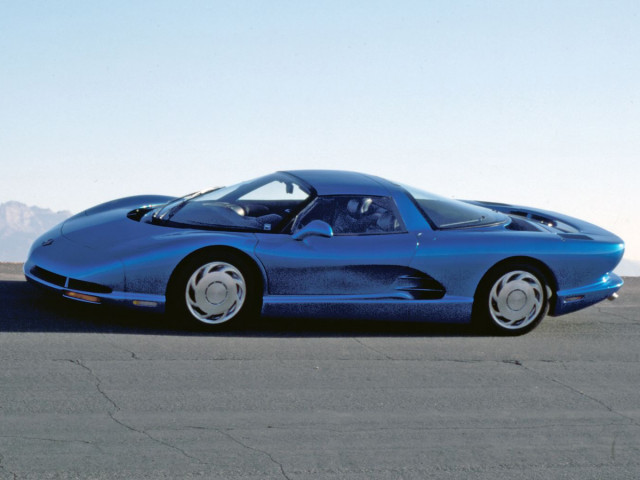
The CERV III’s body alone cost between $300,000 to $400,000 to produce. Photo credit: Hemmings
It was probably for that reason that Chevrolet decided to leave the CERV III as yet another automotive wonder of the modern age, and never let it enter production. It did live on in spirit, however, with the fourth-generation F-bodies inheriting the large windshields and rear wing.
Last But Not Least: The C8 ZORA ZR1 (2017?)
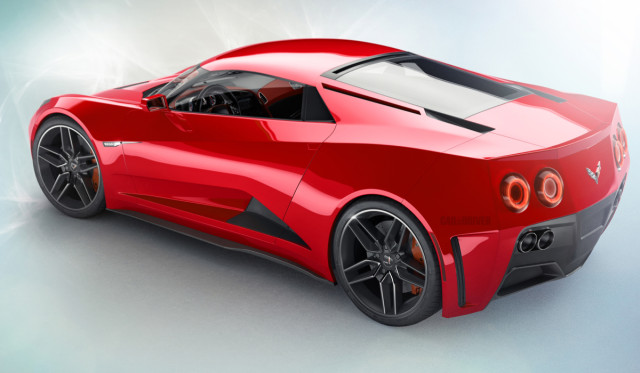 This brings us to modern times, with the C7 proving its mettle day by day both on and off the track. Clues have been dropped time and again by GM (such as the copyright filing for the name “ZORA”), and been bolstered by hushed whispers and loud rants, ranging from free-agent designers to everyone’s favorite lightning rod, Bob Lutz.
This brings us to modern times, with the C7 proving its mettle day by day both on and off the track. Clues have been dropped time and again by GM (such as the copyright filing for the name “ZORA”), and been bolstered by hushed whispers and loud rants, ranging from free-agent designers to everyone’s favorite lightning rod, Bob Lutz.
The mythical C8–the next generation of Corvette–is purportedly going to be the mid-engine, rear-wheel-drive Vette we’ve all been waiting for, and it will be awesome. Conjecture flared up in January of this year, when Car and Driver scooped up spy shots taken by Chris Doane in Detroit.
Sporting a Corvette-like cab mixed with a Holden ute-like bed and body, the car didn’t overtly display anything that automatically shouted “Corvette!” But tell that to the throngs of internet users who glommed onto the images as positive proof that the C8 was real. Not to mention, Chevrolet didn’t immediately issue a press release quieting anyone’s expectations.
According to Car and Driver, the ZORA ZR1, which is what the C8 is expected to be called, will feature small-block V8s, aluminum frame, carbon-composite assemblies, and a host of other high-tech goodies that will propel the MSRP to the $150,000 range. It seems logical that this will mark the first time Chevrolet has ever had two totally distinct Corvette models sold at the same time.
The old phrase “only time will tell” is all we can hold onto as of May 2015. Yet no matter what happens, even if the next generation returns to the trusted FR drivetrain layout, we can rest assured it will remain at the forefront of American exceptionalism when it comes to the high-performance, road-gripping world of supercars.





